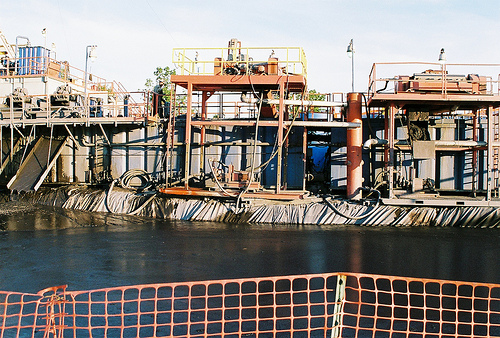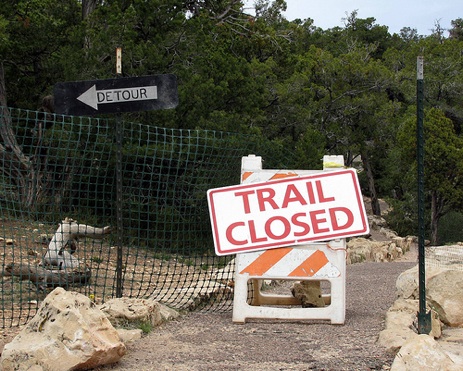 How much is it worth to you to put up with contaminated drinking water?Photo: Helen SlottjeLet’s define “Appalachia” at the beginning: a place blessed with mountains above below-ground natural resources, but cursed with chronically high unemployment; a place where natural resources are not owned by the landowners; a place where extracting those natural resources poisons its waters, land, air, and human beings.
How much is it worth to you to put up with contaminated drinking water?Photo: Helen SlottjeLet’s define “Appalachia” at the beginning: a place blessed with mountains above below-ground natural resources, but cursed with chronically high unemployment; a place where natural resources are not owned by the landowners; a place where extracting those natural resources poisons its waters, land, air, and human beings.
The Appalachian Mountains run from New York to Georgia. The term “Appalachia” usually refers to the coal-dependent central and southern parts, i.e., West Virginia and adjacent states … until now. The Marcellus Shale is turning Pennsylvania and upstate New York into a 21st century Appalachia.
Meet an elusive would-be baron and the poison.
The New York Post calls it a fracking shame:
Inflections Energy, a tiny operator based in Colorado, has made several attempts at securing large lease holdings upstate and has reportedly been grabbing up contracts from small landowners desperate for money in the depressed upstate economy — where the official unemployment rate is 8.5 percent, but the long-term jobless number could be double that according to labor studies. Some of the deals that Inflections Energy has struck have been reported at as low as $3,000 per acre — less than half the going payment rate across the border in Pennsylvania — and have additional onerous contractual terms attached on revenue sharing.
Who is Inflection Energy? It’s a privately held company started in 2008, whose president and CEO is Mark S. Sexton and whose vice president is J. Scott Zimmerman; Kevin R. Collins may also be affiliated. From 1995 to 2004, Sexton was president of Evergreen Resources, Inc., until it merged with Pioneer Natural Resources, and Evergreen Energy Company, LLC, which went delinquent in 2008. Evergreen pushed a “clean coal” product without any luck. Sexton has given a total of $55,300 since 2000 to a variety of candidates, mostly focusing on Colorado Republicans with some non-Colorado Republicans and a handful of Colorado Democrats, according to Open Secrets. Zimmerman and Collins have also given to Republican causes. A 2006 story on the investor website Seeking Alpha noted that problems continue at Evergreen Energy, including cost overruns and inadequate results for its “clean coal.” An Evergreen Energy blog was apparently written by a disgruntled investor:
Evergreen Energy (EEE), formerly KFX, together with its founders and management have a long track record of failure, deception, SEC violations (including market manipulation, FD regulations and others), accounting irregularities, evidence of insider trading, paid promotion, relationships with known criminals and cozy relationships with corrupt public officials. Investors beware.
In short, Inflection is a startup run by people with a history of generous Republican donations and a questionable track record.
Last year, Inflection offered Broome County, N.Y. (on the Pennsylvania border and home of Binghamton University) $3,000 per acre in a deal by telling Broome officials that Las Animas County, Colorado went from being one of the poorest counties in Colorado to among its richest, thanks to Evergreen. The deal was rejected twice, but not before Broome County’s chief executive accepted campaign funds from Inflection while pushing the Inflection deal.
Even a Binghamton pro-leasing website warns of Inflection’s tactics:
The result was a lease signed with Inflections Energy with an upfront payment of $2,750 an acre and 18.75 percent royalty. This by no means is an expression of where the market value is across the Pennsylvania border. As recently as five or six weeks ago, a large landowner, about 15 miles south of the border in Bradford County, with over 400 acres of land, signed a deal at $6,750 an acre and 21 percent.
Broome County and its neighboring counties represent a relatively poor area of New York state in which $6,750 per acre may be a princely sum. What does that money buy? The New York Times answers: radioactive, carcinogenic water. Fracking “wastewater, which is sometimes hauled to sewage plants not designed to treat it and then discharged into rivers that supply drinking water, contains radioactivity at levels higher than previously known, and far higher than the level that federal regulators say is safe for these treatment plants to handle.” Natural gas providers like to bill the fuel as a bridge to a wholly clean energy future. However, the industry is compiling both a dismal safety record and an equally dismal record for truthfulness. DeSmogBlog explores rhetoric vs. reality, including:
2. RHETORIC: Hydraulic fracturing is a proven method successfully applied in millions of gas wells for over 60 years.
REALITY: Again, this assertion leaves a false impression that industry has used the same fracking technique for six decades, when in fact the current hydraulic fracturing practices used in unconventional gas recovery have evolved greatly from the original methods employed 60 years ago. The reality is that the industry has less than ten years’ experience with high-volume slick water hydraulic fracturing. …
4. RHETORIC: The natural gas industry and its use of hydraulic fracturing are — and have always been — “aggressively regulated” by the states.
REALITY: State public health and safety agencies have failed to keep pace with the industry’s aggressive experimentation with new drilling technologies and the rapid expansion of unconventional gas development. …
7. RHETORIC: The majority of fracture fluids remain underground in the hydraulic fracturing process.
REALITY: Again, this is industry “spin” that fails to account for widespread uncertainty about the true fate of these industrial fluids.
A 2009 Department of Energy report suggested that between 30 and 70 percent of fracking fluids remain underground, however the DOE noted the uncertainty of determining the exact fate of the fluids: “it is not possible to unequivocally state that 100 percent of the fracturing fluids have been recovered or to differentiate flow back water from natural formation water.”
Most alarming for climate hawks is a suggestion that natural gas is worse than coal for climate because it releases methane into the atmosphere. DeSmogBlog sums up rhetoric and reality:
9. RHETORIC: Natural gas has a lighter carbon footprint than other fossil fuels such as oil or coal.
REALITY: Although gas burns cleaner than coal and oil, the extraction, the processing and transport of natural gas emit large amounts of methane, a potent greenhouse gas (GHG). Methane has a global warming potential 21 times greater than carbon dioxide on a 100-year scale, and 72 times greater than carbon dioxide on a 20-year scale. A recent, ongoing Cornell analysis suggests the footprint of shale gas may be 1.2 to 2.1-fold greater than coal’s on a 20-year timeframe.
Recently, the EPA drastically increased estimates of methane leakage from the natural gas industry. The revised figures estimate emissions from unconventional natural gas operations at 9,000 times higher than previous estimates. Yet, due to inadequate data regarding unconventional natural gas extraction from resources such as shale gas, the EPA maintains that these revised figures likely underestimate the total amounts.
Professor Robert Howarth and colleagues from Cornell University, using EPA estimates of methane leakage from natural gas operations, puts natural gas ahead of coal in terms of GHG emissions.
The Cornell research has been submitted for publication and is undergoing peer review; a summary [PDF] of the tentative findings indicates that methane emissions from fracked natural gas are far larger than previously believed, and worse over a 20 year timeframe than coal.
Climate hawks and political aficionados know the complex relationship between Appalachia’s coal and its poverty. A 1981 study [PDF] of Appalachia found that ownership of land and minerals was concentrated in the hands of out-of-region entities, a key element in explaining inadequate tax revenues, lack of economic development, and poverty. Mineral rights were bought in the late 19th century for pennies per acre: “Often a mountaineer could be easily persuaded by these speculators to sell the rights to mine his land or cut his timber for a few cents an acre — a paltry sum compared to the wealth the company could extract from it, but enough money to provide a small-scale farmer with many luxuries.”
Since the 19th century, the price has gone up from a few cents an acre to $2,750 or even $6,750 per acre, but the result is the same. We’re witnessing the birth of a 21st century Appalachia.



